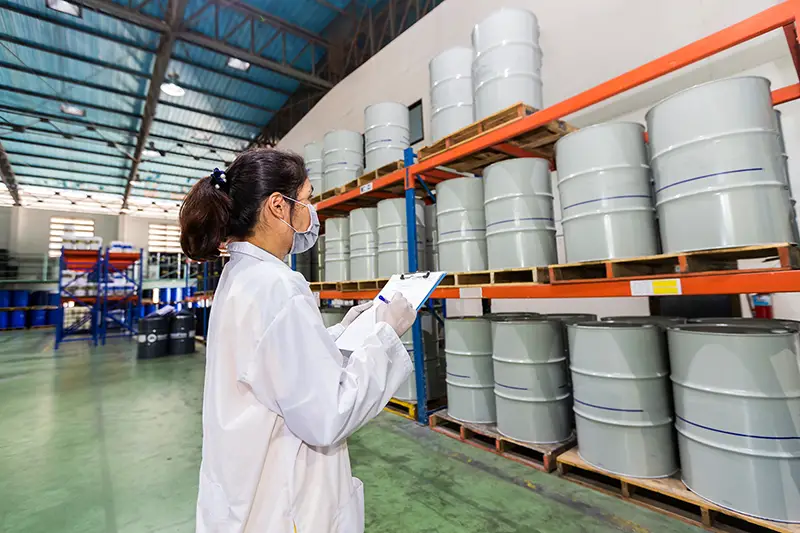Click here to get this post in PDF
Managing the risks of trips and slips in warehouse environments is crucial to promoting safe working practices. The health and safety of your employees should always be your number one priority, and one of the most common causes of workplace injuries is a slip or a fall. Many of these injuries are easily preventable through simple planning and thought when designing the work environment.
You should ensure that you have thought about the common causes of falls, slips and trips when trying to avoid them. You should also consider the specific aspects of your business that may exacerbate the risk factors associated with falling in the workplace.
Plan The Layout Carefully
The layout of your warehouse can make all the difference in protecting the health and safety of your workers. Your warehouse layout can also have a significant impact on productivity. You should ensure there are designated walkways throughout the warehouse that will allow your employees to move freely. These walkways should always be clear, and employees should be reminded to keep them clear using signage.
It is also a good idea to ensure there are designated areas for different duties throughout the warehouse. This is particularly important if you have people working with liquids or other materials that can be trip or slip hazards. Keeping these tasks away from the walkways and busier parts of the warehouse can ensure that the risk is minimised.
Have Cleaning Done After Hours
Regular cleaning is essential to keep your warehouse hygienic. It can also have significant potential for causing slips and falls if done during the working day, particularly when it comes to mopping and floor cleaning. It is best to schedule your warehouse cleaners after the rest of your employees have finished their shifts. The fewer people in the warehouse, the less like anyone is to slip as a result of cleaning work.
Provide Suitable Footwear
Suitable footwear should be available to all members of your team. It is best to provide this yourself, as it will give you greater control over the quality of the footwear. If you take on temporary workers regularly, it is a good idea to have all the common sizes stocked so that you will be able to offer workers the proper footwear. You should look for sturdy work boots with good soles that prevent slips and protect the toes.
Keep Cabling Covered
Cabling is often necessary in a warehouse, and it is best to ensure, where possible, that cables do not cross walkways as this may create a trip hazard. If you have no choice but to lay cables across thoroughfares or walkways, you should ensure they are adequately covered. This can protect the cabling and your employees. You should find a suitable cable protector, like these excellent options from The Workplace Depot, that will keep the cables contained and protect your staff.
Ensure Flooring Is Level And Professionally Installed
You should regularly inspect your warehouse flooring to look for signs of damage or wear. If your flooring needs to be replaced, it should be done so by a professional to ensure the best results. The flooring in your warehouse should be level and smooth, with no uneven areas which could be trip hazards.
Provide Proper Safety Training
Training your team in warehouse safety can be an excellent way to prevent slips, trips and falls. You should provide regular health and safety training that will help keep employees safe. Ensure that your business’s best practices are suited to the risks associated with warehouse work. It is also a good idea to place signage around the warehouse to remind employees about your company policy.
Carry Out Regular Risk Assessments
Health and safety risk assessments are a critical part of any business operations. You should do these at regular intervals to ensure that your policies and processes are continually improving. It may also help to have an independent evaluator visit your premises to carry out a review. An outside party with fresh eyes may spot something that you have overlooked.
Use Appropriate Lighting
Lighting can help prevent trips and falls by allowing your employees to see clearly what is in front of them. You should ensure that all areas of the warehouse are brightly lit by lights designed and purchased from companies like CDM2 Lightworks which specialise in lighting solutions for larger-scale buildings. Motion-sensitive lighting can be helpful to improve energy efficiency, but this should be maintained to ensure it is fully functional at all times.
You should also ensure you have emergency lighting, a legal requirement for commercial properties. Emergency lighting should be adequate to allow employees to safely exit the building should the main lighting fail.
Use Anti-Slip Flooring
When selecting flooring for your warehouse, you should take into account how slip-proof they are. If your office has flooring already installed, you could look for options that allow you to improve it. Anti-slip mats and tape can be an excellent investment to enhance the safety of existing flooring.
You may also like: 5 Best Practices For Handling Hazardous Materials
Image source: Shutterstock.com

